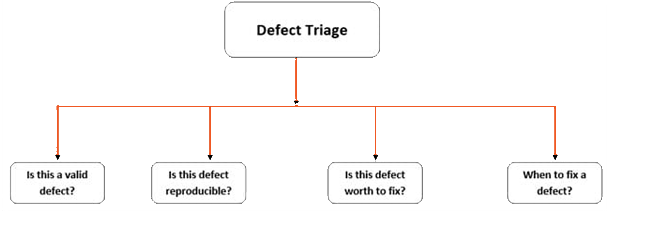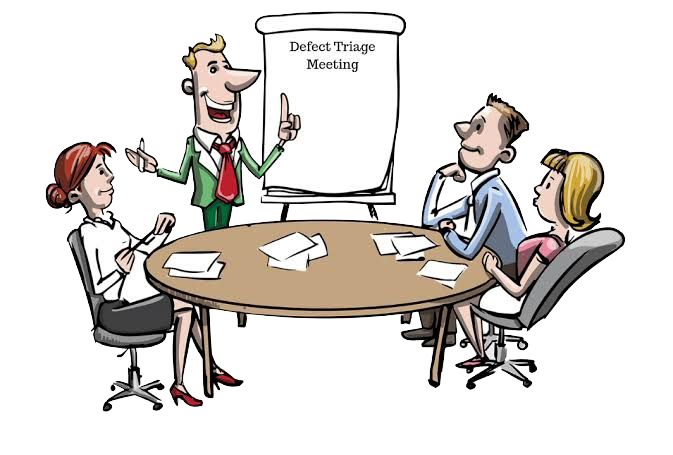
Defect Triage: All You Need to Know is here!
February 14th, 2019

What is Defect Triage?
Defect Triage is a process where the testers find out the bug and assign a degree of risk, re-occurrence, and severity to it. This degree essentially prioritizes the bug to be treated first.
Triage however is a medical term which basically means trial or a try-out. When you arrive at the emergency department, your first medical evaluation is done by a nurse.

In the emergency department, it is typically done in the triage room. During this time it is very important that the patient describes their problem to the nurse so that she can accurately assess what needs to happen next.
Based on the severity or urgency of another person’s medical condition, they may be taken back quicker than you. This is exactly what happens when a software tester runs a defect or bug triage.
They assign a severity degree to each bug and the bug which seems more severe or the bug which has more potential to compromise the integrity of the system is taken into consideration first.
Defect Triage Meeting
Triage meetings are facilitated by the QA lead and it is coordinated with business analysts, IT lead, project manager, or even the product manager.
During the development or testing phase, testers come across a lot of issues or bugs which keep bothering everyone. To take care of these bugs, the defect triage meeting is organized.
The main objective of this triage meeting is to categorize, prioritize, and track issues.
Triage meetings happen every so often, sometimes even 3 – 4 times in a week depending on the size of the project, project situation, schedule, and number of defects. Multiple factors play a role in determining the number of triage meetings needed to eliminate a bug once and for all.
All these meetings involve discussions of complexity of the defect, risk involved in it, assignments, re-assignments, and rejections. All these updates are captured in the bug tracking system.
For the best results, QA lead should send out the bug report with the existing defects or new defects for every meeting.
Each defect should be analyzed to see whether correct priority and severity has been assigned. The main motive of this meeting is to fix all issues in a timely, fixed, and accurate manner.
During the meeting, each bug is categorized in one of the three categories:
- IMMEDIATE ACTION TO FIX THE BUG: The defect falls in this category because of two reasons. The first reason is that there are sufficient resources with the team to fix the bug and the second reason is that the bug might cause problems in the future therefore it is important that they fix the bug immediately.
- ACTION ON THE BUG AT A POINT LATER IN TIME: A bug falls in this category when the team knows that it is not something major and can be treated after some time.
- NO ACTION BUG: This basically means that the bug is very minor and doesn’t have any effect on the whole system. Therefore, there is no need to take an action on such bug.
Steps in Defect Triage
The triage team consists of project manager, tester, test lead, developer, environment manager, test manager, and business analyst. There are 3 steps in defect triage; defect review, defect assessment, and defect assignment. Each of the steps is discussed in detail below:
- DEFECT REVIEW: All the personnel mentioned above dive deep into the origin and consequences of each defect in an attempt to fix them.
- DEFECT ASSESSMENT: In this step, the defects are categorized into 2 categories; to be fixed and on hold. The severity of the defect is the main basis of this segregation. The above mentioned personnel collectively make the decision on which defect to treat immediately and which defect to be kept on hold.
- DEFECT ASSIGNMENT: Now that the team has a list of defects that need to be treated first hand, they assign each defect to the concerned person. All this is done after the defect has been properly and comprehensively evaluated.
Roles and Responsibilities of Each Member in the Triage Team
- TEST LEAD: The test lead is the one who starts it all. Test lead sends a formal invite to all the triage members along with a detailed defect report. The test lead is the first person to identify and assign a degree of severity to each defect. One of the main responsibilities of the test lead is to prepare a presentation for the triage team which would give them more insight on each defect. This presentation helps the team members to get to the root of the problem quickly.
- PROJECT MANAGER: The project manager plays a pivotal role in prioritizing defects, making the defect list, and mediating the whole meeting. He also ensures that all the members of the triage team are present for the discussion. Sometimes the discussion heats up and that’s where the project manager steps in to allow the team members express things from their perspective.
- DEVELOPMENT TEAM LEAD: Development team lead and project manager collectively prioritize defects. The main function of the development lead is to communicate the risks involved and the complexity level of each defect. Also, he is the one who assigns tasks to different members of the triage team.
There are other members in the team but the project manager, test lead, and the development team lead are the key persons. The meeting would not reach a conclusion if any of these is missing.
What Happens in a Triage Meeting?

The defect triage meeting is divided into 3 parts; pre-meeting, during meeting, and post-meeting. Before the meeting starts, the test lead sends a report to all the members of the triage team so that they are aware to some extent about the latest bugs.
- PRE-MEETING: Testers have a key role to play in the pre-meeting. Testers give information about the bug to the team and they categorize each bug in different sections on the basis of severity and priority. So basically, the pre-meeting session is owned by the testers.
- DURING MEETING: It doesn’t always happen that all the issues in a meeting are resolved. Some pending issues from the previous defect triage meeting are discussed before moving on to the new issues. Then the progress on previous issues is discussed. From this point forth, every point is noted down about the severity of the existing defects. The team members collectively make a decision on which defect to be fixed immediately and which defect they can postpone to a later date. If the deadline is near, the bugs with a higher degree of severity will be treated first and the less severe bugs will be kept on hold. However, if there is no pressure of deadlines, even the pettiest bugs can be fixed in the starting of the project. Based on this, the bug list is updated and this is where the assignment of tasks comes in. The test lead has the last word in the meeting. He quickly summarizes the whole meeting and communicates the immediate courses of action to respective team members.
- POST-MEETING: MOM (minutes of the meeting) is shared to the defect triage team after the accomplishment of the meeting. This document contains the key points discussed during the meeting.
Contents of a Bug Triage Report
- DEFECT ID: Each defect has a unique number assigned to it which differentiates it from other defects.
- DEFECT DESCRIPTION: This is related to how the defect causes malfunction in the system.
- CREATION DATE: It is the date on which the bug was noticed for the first time.
- CREATOR: Creator is the person who first noticed and reported the defect.
- SEVERITY: This is a measure of how severe the bug is.
- PRIORITY: The priority could be high, medium, or low. High priority means that the bug requires immediate attention, medium priority means that the bug can be resolved after sometime and doesn’t require immediate action, and low priority means that the bug doesn’t have any significant or noticeable impact on the project and therefore may or may not be resolved.
- STATUS: Whether the bug is new, under review, in progress, or completed is determined by referring to the bug status.
- ASSIGNMENT DATE: This is the date on which the bug was assigned to the respective personnel for resolution.
- ASSIGNED TO: This field has the name of the person to which the bug has been assigned for resolution.
- RESOLUTION: What is being done to resolve the bug.
- DATE OF RESOLUTION: Estimated date on which the defect will be completely resolved.
- ESTIMATED TIME: Speculated time of resolving the defect.
- ACTUAL TIME: Total time elapsed for resolving the defect.
- ROOT CAUSE DESCRIPTION: This field has information related to why the bug appeared in the first place.
Why do We Need Defect Triage?
The main benefit that you gain from the process is that your team will get to evaluate the severity of the bug, devise plans to fish it out and come to a conclusion regarding the resources that need to be allocated for the process. Defect triage is mainly used in agile testing methodology
CONCLUSION
To resolve the defect, a defect triage meeting is called. The test lead, project manager, and development team lead must be present among all the triage team members.
The defect triage meeting is completed in 3 stages; pre-meeting, during meeting, and post meeting. After all this, the test lead prepares a detailed triage report.
The report has all the information starting from when the defect was initially noticed until the root cause of the defect.
The frequency of the defect triage completely depends on the size of the project. It can be organized on a weekly, monthly, or daily basis.


 Software Testing Events
Software Testing Events App Testing
App Testing Web App Testing
Web App Testing Game Testing
Game Testing Automation Testing
Automation Testing Load Testing
Load Testing Security Testing
Security Testing Performance Testing
Performance Testing Hire a Tester
Hire a Tester







